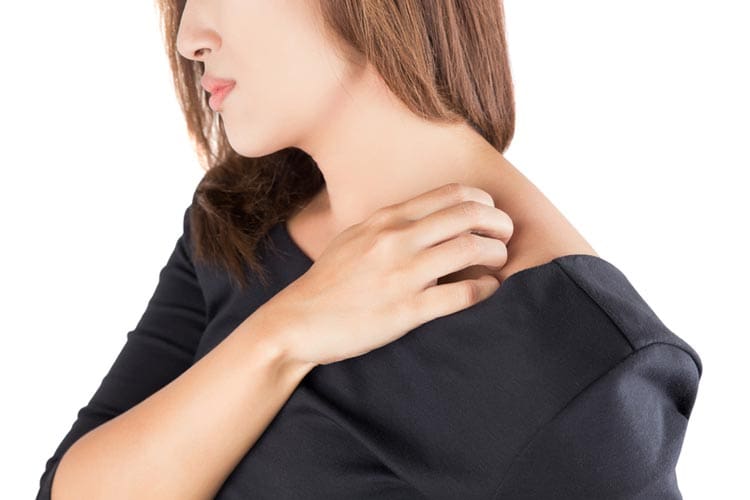Prickly heat, or heat rash, is an itchy skin rash with small red spots all over the affected areas. It is common in Australia in hot and humid areas.
What causes heat rash?
Heat rash or sweat rash is caused by a blockage and inflammation of sweat ducts during times of exposure to heat and high humidity. These blocked sweat ducts cause sweat to divert into adjacent tissue thus producing the itching and prickling sensations associated with the condition. Doctors call this condition miliaria.
Symptoms
- Tiny red spots, which usually appear on areas of the body where sweat collects, such as the armpits, back, under the breasts, chest, groin, crooks of elbows and knees, and the waist. The spots also occur where clothing causes friction on the body.
- Irritating itch and prickling sensation.
- Redness and mild swelling of the affected area.
What is the difference between prickly heat and urticaria?
Urticaria is characterised by hives (weals) or swelling deeper in the skin, whereas the rash of prickly heat consists of small red spots over the affected areas. Both are intensely itchy.
Self-help: what you can do
Treating heat rash is simple and usually does not require medical assistance.
- Wear light, loose-fitting soft clothes. Avoid clothing that traps heat and moisture. Natural fabrics such as cotton are best.
- It is important not to overheat in bed at night, and sleeping under a sheet and a cotton blanket will help.
- Don’t use plastic mattresses or mattress protectors; use a sheepskin underlay if possible.
- Stay in cool or air-conditioned, or well-ventilated environments. Use a fan if necessary.
- Take frequent cool baths or showers. Dry yourself thoroughly and dust bland types of powder (such as unperfumed talcum powder) on body creases and affected areas, and use an antiperspirant.
- Apply calamine lotion or prickly rash lotions to soothe the affected areas, but avoid using ointments or creams — they keep the skin warm and moist and may make the condition worse.
- Ask your doctor or pharmacist about low-dose steroid cream or lotion.
When you should see a doctor
You should seek medical attention if:
- The rash persists longer than a few days.
- The rash is accompanied by fever or chills.
- Lymph nodes are swollen in the groin or armpits.
- The rash becomes filled with pus.
- The rash occurs regularly.





